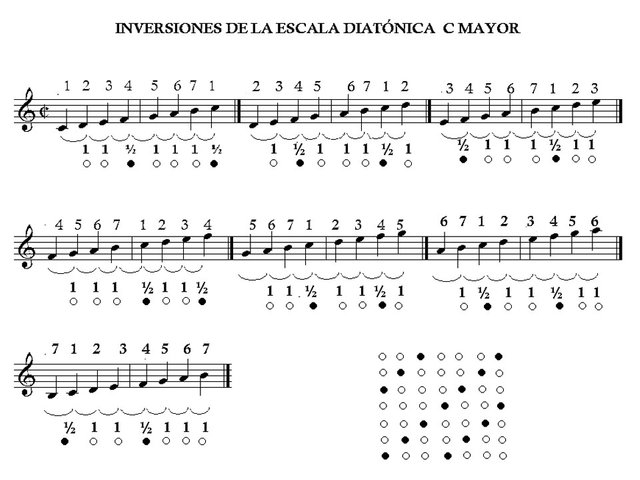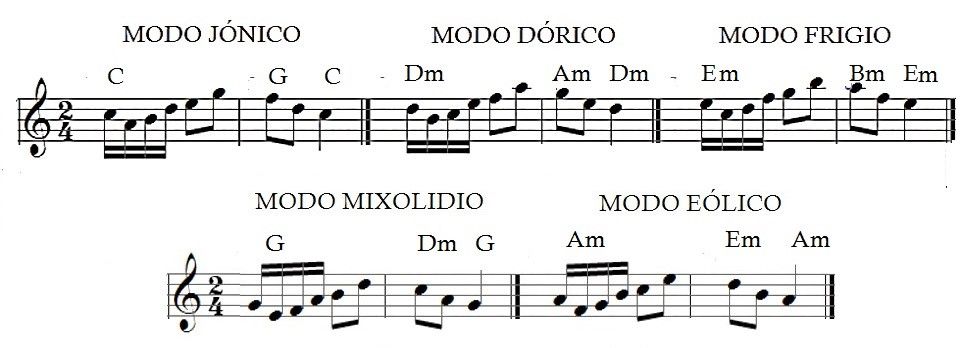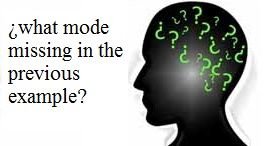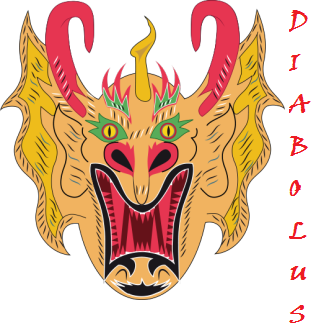Musical Scales IV
Continuing with the theme of the musical scales, we recall that in the previous post i refer to the diatonic scale, for his remarkable influence in the development of the tonality; this in order not to lose the idea that, the center of all these articles that I have published so far are based on such a scale.
Although in the Prehistoric times, due to the nature in the design of musical instruments of those times and by the simplicity of the resource, were used in one, two, three and even five sequences of sounds that preceded the pentatonic scales and other forms of scales in different cultures of the world (of which I will write more later); and despite the fact that my teacher Pythagoras, precisely described the distances of 8ª 5ª and 4ª, illuminating many scholars who continued practicing his teachings, within which the new theoretical tried through the so-called Greek modes, organize the sounds for the understanding of the language; where all of this valuable effort, seems to give us the feeling that one scale does not have to do with another, today I come to show that all the modal scales revolve around the same tonal center, are investments in the structure of the diatonic scale.

We observe in each investment of the scale, the same sounds organized in ascending order, where the difference is marked by the degree where begins the melody, which makes change the sequence of sounds. This pattern of perfect order is what we visualize best in the chart of graphical circles.
This means that Greek modes, with investments in the sequence of the sounds of the diatonic scale more "are not a different tonality".
At the time, some theorists claimed that the modes were not part of a tonality, others felt that each mode was a different tonality, in addition these were built in descending order by tetracordios (set of four sounds) and were classified in a principle in Protus, Deuterus, Tritus and Tetradus, then in the authentic modes that led the plagal modes, to which his Hipos were added at a lower quarter distance. There is a Renaissance book, entitled Dodekachordon (published in the city of Basel 1547), written by the Swiss music theorist known as Glareanus, which deals with the development of this paragraph specifically, for those who want to know the details; I shall not go into this, I feel that it is unnecessary, considering that is discontinued and today serves only as a historical reference of music theory.
My purpose here is to move forward on the practical use of the modes of investment of the diatonic scale in any tonality, that is, what we are looking for the musicians. We can launch a melody based on any modo of the 7th degree of the diatonic scale and although, the sequence of sounds generate a different order to the formula, these still retain their position in the corresponding grade and therefore; we can harmonize them, with the chords of that hue.
Now let's look at an example of each modal inversion in the tonality and its chords triad:

JONIC MODE: the first compas we will accompany the melody with the finalis chord of 1grade C, in the second compas with the repercusa 5º G and then we will return to the tonic C.
DORIC MODE: the first compas we will accompany the melody with the chord of the 2º Dm, in the second compas with the chord of the 6º Am and then back to Dm.
PHRYGIAN MODE: the first compas we will accompany the melody with the chord of the 3º Em, in the second compas with the chord of the 7º Bm and then we return to Em.
MIXOLYDIAN MODE: the first compas we will accompany the melody with the chord the 5º G, in the second compas with the chord of the 2º Dm and then back to G.
EOLIC MODE: the first compas we will accompany the melody with the chord of the 6º Am, in the second compas with the chord of the 3º Em and then we come back to Am.
The first chord on the second beat in some cases can be used in state fundamental and in others in the first investment


In the Middle Ages, according to the Catholic Church, it was said that through the interval of the fourth augmented or fifth diminished (FA-SI), the energy of darkness was invoked, so it was forbidden in those times; that within the compositions and musical interpretations, these two intervals will sound. This is how the interval of the fourth augmented or tritone, earns the name of Diabolus or Note of the Devil, since it produces a very tense sonority.
In the structure of the major diatonic scale, there is only an interval of fourth augmented that is formed between the 4th and the 7th, in the case of the tonality, Greater DO, corresponds to the sounds (FA-SI). If you look at the previous example, they are precisely the ones that are missing for the mode LIDIO and LOCRIO. This means the following:

1 JONIC MODE in F Major is what today is confused with the LYDIAN mode to avoid the augmented fourth interval, added the bemol to the note SI. Here the discovery of the armor of the key and the beginning in the development of tonality. In the example: the first measure is accompanied with the Chord the 1º FA , in the second compas with the chord of the 5º C and then back to F.
2 EOLIC MODE in F Major known as tone pilgrim. In the example: the first measure is accompanied with the chord of the 6th Dm, in the second bar with the chord of the 3º AM and then back to Dm.
3 Phrygian Mode In G Major: this is what today is often confused with the LOCRIO MODE: The sustained appears in the armor of key and the tonality. In the example: the first measure is accompanied with the chord of the 3º Bm, in the second compas with the chord of the 6º F#m and then we come back to Bm.
Here the Greek modes. If you want to deepen in their study and harmonization with contemporary techniques, soon i will open a virtual classroom. For any doubt or question in this and the previous post you can enter to the discord of musicians in Steemit, by clicking on the link https://discord.gg/6cefM7

If you liked this post, apoyame to continue creating musical content, help me to spread it to reach more musicians Remember always cite the source! Thank You and infinite blessings!
Afinación musical en la historia II.
Musical scales I.
Musical scales II.
Musical scales III.
All my musical items have a lively awareness and don't allow your record, edit, transformation, total or partial, or marketing in any form or by any means, electronic, mechanical, printed or audiovisual equipment. I reserve all rights of author.
The infringement of the rights of author mentioned can be constitutive of crime against intellectual property. @darlingomaet
version in spanish: https://steemit.com/spanish/@darlingomaet/escalas-musicales-iv
Donations to the development of music research and education:
Wallet BTC: 3Ktnthzy6QJ5YssBfZwhdGc2asQyfmgYF6
Wallet BCH: qpdcr45wychsltfvj3d4a3s6q6qkzwq96qumex669q
Wallet ETH: 0x7d00Bc1Ccf224d5993Df74c741aeA73cf76E2b35
https://steemit.com/@a-0-0
Excelente post, thanks for the information darlingomaet.
Congratulations! This post has been upvoted from the communal account, @minnowsupport, by darlingomaet from the Minnow Support Project. It's a witness project run by aggroed, ausbitbank, teamsteem, theprophet0, someguy123, neoxian, followbtcnews, and netuoso. The goal is to help Steemit grow by supporting Minnows. Please find us at the Peace, Abundance, and Liberty Network (PALnet) Discord Channel. It's a completely public and open space to all members of the Steemit community who voluntarily choose to be there.
If you would like to delegate to the Minnow Support Project you can do so by clicking on the following links: 50SP, 100SP, 250SP, 500SP, 1000SP, 5000SP.
Be sure to leave at least 50SP undelegated on your account.
¡@darlingomaet! Muy bueno el contenido, sigue asi!
Esta publicación es apoyada por la comunidad de UNEEVERSO, para que al obtener votos automatizados pueda conseguir PROMOCIÓN GRATUITA y pueda darse a conocer a un público más grande. Este contenido lo merece, considera darle reesteem.
¿Te interesa, obtener upvotos y dar a conocer tu publicación?
Te invitamos a unirte a nuestra comunidad, cada día crece más y tu puedes crecer con nosotros.
¿Te interesa conocer sobre nuestro proyecto?: https://goo.gl/cuFExt
¿Te interesa conocer sobre nosotros y sobre actualizaciones de uneeverso.com?:
* Acceso a Uneeverso : https://www.uneeverso.com/registro
* Acceso temporal a Uneeverso : http://uneeverso-oficial.mircloud.host/registro
* Uneeverso en discordapp: https://discord.gg/Y5kM5Kj
* Siguenos: @blickyer @yunior.selbor @sweetvenon @arevaloarcadio @baudilio @jnavarrotovar
You received a manual upvote from @MusicVoter and people following my Curation Trail due to the musical content of this post.
To find out how I decide who to up vote please READ THIS
Do you want to EARN CURATION REWARDS AUTOMATICALLY and help independent musicians?
HERE'S HOW
@MusicVoter is part of the Atom Collector Records family
Add dsound, Musicoin, SoundCloud, Spotify, BandCamp, DTube and YouTube
Get MORE FANS and earn $INDIE!